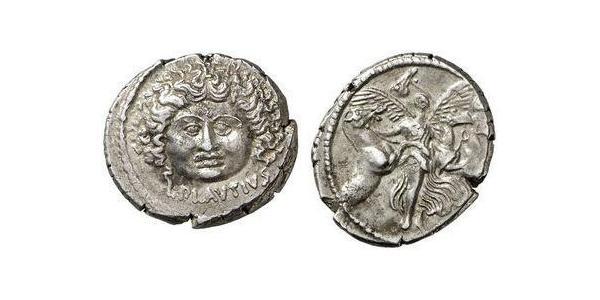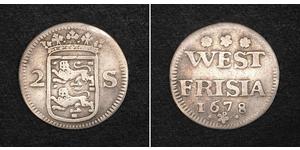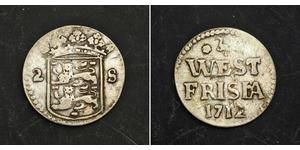[ 5891] Roman Republic L. Plautius Plancus moneyer Silver Denarius (3.97 gm.) Rome mint: 47 B.C. Reference: Plautia 14; B.M.C. 4009; Syd. 959b; Craw. 453/1c Mask of Medusa, facing, hair dishevelled. L PLAVTIV below. Aurora flying right conducting the four horses of the Sun, PLANCVS below. This moneyer was a brother of L. Munatius but was adopted into the Plautia gens. Ovid relates that during the censorship of C. Plautius and Ap. Claudius Caecus in B.C. 312, the latter quarreled with the tibicenes, who retired to Tibur. As the people resented their loss, Plautius caused them to be placed in wagons and conveyed back to Rome early in the morning, in order that they should not be recognized their faces were covered with masks. The chariot of Aurora is an allusion to the early arrival and the mask to the concealment of their faces. In commemoration of this even the fêtes called Quinquatrus Minusculae were celebrated yearly at Rome on the 13th June, at which those that took part in them wore masks. Provided with certificate of authenticity. CERTIFIED AUTHENTIC by Sergey Nechayev, PhD - Numismatic Expert In Greek mythology Medusa (Greek: Μέδουσα (Médousa), " guardian, protectress") was a Gorgon, a chthonic monster, and a daughter of Phorcys and Ceto. The author Hyginus, (Fabulae, 151) interposes a generation and gives Medusa another chthonic pair as parents. Gazing directly upon her would turn onlookers to stone. She was beheaded by the hero Perseus, who thereafter used her head as a weapon until he gave it to the goddess Athena to place on her shield. In classical antiquity the image of the head of Medusa appeared in the evil-averting device known as the Gorgoneion. Aurora (Latin: [awˈroːra]) is the Latin word for dawn, the goddess of dawn in Roman mythology and Latin poetry. Like Greek Eos and Rigvedic Ushas (and possibly Germanic Ostara), Aurora continues the name of an earlier Indo-European dawn goddess, *Hausos. Roman mythology In Roman mythology, Aurora, goddess of the dawn, renews herself every morning and flies across the sky, announcing the arrival of the sun. Her parentage was flexible: for Ovid, she could equally be Pallantis, signifying the daughter of Pallas, or the daughter of Hyperion. She has two siblings, a brother (Sol, the sun) and a sister (Luna, the moon). Rarely Roman writer imitated Hesiod and later Greek poets and made babies Anemoi, or Winds, the offspring of the father of the stars Astraeus, with Eos/Aurora. Aurora appears most often in sexual poetry with one of her mortal lovers. A myth taken from the Greek by Roman poets tells that one of her lovers was the prince of Troy, Tithonus. Tithonus was a mortal, and would therefore age and die. Wanting to be with her lover for all eternity, Aurora asked Zeus to grant immortality to Tithonus. Zeus granted her wish, but she failed to ask for eternal youth to accompany his immortality, and he became forever old. Aurora turned him into a grasshopper. Usage in literature and music Aurora Taking Leave of Tithonus 1704, by Francesco Solimena From Homer's Iliad : Now when Dawn in robe of saffron was hastening from the streams of Okeanos, to bring light to mortals and immortals, Thetis reached the ships with the armor that the god had given her. (19.1) But soon as early Dawn appeared, the rosy-fingered, then gathered the folk about the pyre of glorious Hector. (24.776) From Virgil's Aeneid : Aurora now had left her saffron bed, And beams of early light the heav'ns o'erspread, When, from a tow'r, the queen, with wakeful eyes, Saw day point upward from the rosy skies. In Shakespeare's Romeo and Juliet (I.i), Montague says of his lovesick son Romeo But all so soon as the all-cheering sun Should in the furthest east begin to draw The shady curtains from Aurora's bed, Away from the light steals home my heavy son... In the poem "Tithonus" by Alfred, Lord Tennyson, Aurora is described thus: Once more the old mysterious glimm ...
читати далі

|
Добавив:
anonymous 2015-08-18 |
Similar Coin Groups
2025-05-28
- Покращення Живого Каталогу Монет / загрузка монет
990 монет було додано з 2025-05-21 по 2025-05-28
Одна з них:
2025-05-24
- Нова монета додана до 2 Stuiver Нідерланди Срібло
2 Stuiver Нідерланди Срібло
в групі 2 монет / 2 цін
⇑
1712, Netherlands, West Friesland. Silver 2 Stuivers (Double Wappenstuiver) Coin. Condition: VF+ Mint Year: 1712 Province: Holland Reference: KM-106.1. Denomination: 2 Stuivers (Doub ...
Можливо, Вас зацікавить...






















